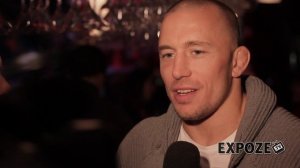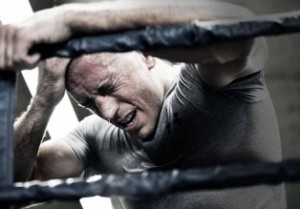
Still shot of Richard Sherman interview following NFC championship game on 1-19-14
Following the NFC championship game on Sunday, Richard Sherman, an all-pro cornerback for the Seattle Seahawks, boasted about himself as the best cornerback in the league in an interview with Erin Andrews. During the interview, Sherman shouted at the camera and interviewer and insulted his opponent, Michael Crabtree. The interview was broadcast nationally on FOX and many people found the outburst off-putting.
Sherman’s background is an important part of his persona. This is not the first time that Sherman has come off as brash. In February 2013, Sherman engaged in a highly publicized Twitter war with Tampa Bay Buccaneers cornerback Darrelle Revis. Along with other incidents, Sherman has built a reputation as a cocky, trash-talking, physical player. This reputation is not completely by accident. Sherman has a bachelors degree in communication from Stanford University where he earned a 3.9 GPA. His intelligence and communication savvy have orchestrated his public persona.
Much of the response to the interview has been critical of the cornerback. In the immediate backlash of his comments Sherman did not back down. He went on to reiterate his sentiments about Crabtree and stated that an altercation between the two that had occurred previous to that particular football game contributed to his anger. On Monday, Sherman wrote a column regarding what took place after the game. He gave a small bit of backstory to the Crabtree situation and also defended himself as a person. He accepted that his antics are a small part of who he is but cautioned people not to make character judgements based off what goes on during a football game. Although he did not apologize in his column, Sherman did send a text message to an NFL analyst. In the text message he apologized for his antics during the interview but left out what many people would have expected in the apology. He did not apologize to Crabtree. Sherman apologized to his team for taking the glory away from a great win. After his unexpected interview, stories about Sherman were the heavy focus in the media. He apologized to his team because they did not get the recognition that they deserved for playing a great game. From a public relations perspective, following the outburst, Sherman has done things well. He has maintained an honest and transparent representation of himself and he has not gone back on his word.
Although I would not recommend the behavior exhibited in his interview, if I was advising Sherman in communication, my public relation response would have been similar. When analyzing the communication that took place after the interview, I don’t think he could have done much better. The message that he sent to his publics was that he is genuine, passionate and loyal to his team. Unfortunately for Sherman, his message will not be heard by everyone that was affected by his interview. Immediately following a nationally broadcast football game on FOX, the audience that saw his interview was enormous. His apology however was a text message to ESPN’s Ed Werder. This platform is unlikely to reach the multitudes of people that developed a negative opinion about him. My recommendation would be to do another on-camera interview with Erin Andrews. A second interview would give him the opportunity to communicate why he acted the way he did. The interview could be posted on YouTube and people that searched for the original interview would be able to watch the follow-up as well. By doing a second interview and having it posted on YouTube, Sherman would be able to reach a large audience and help people understand where he was coming from.
Overall, I think Sherman made the best of a controversial situation. His communication was honest and people admire that quality. The biggest point of improvement that he could have made was reaching a larger audience with his response. I don’t believe that he has won back all of his fans but he might have gained more than he lost.








